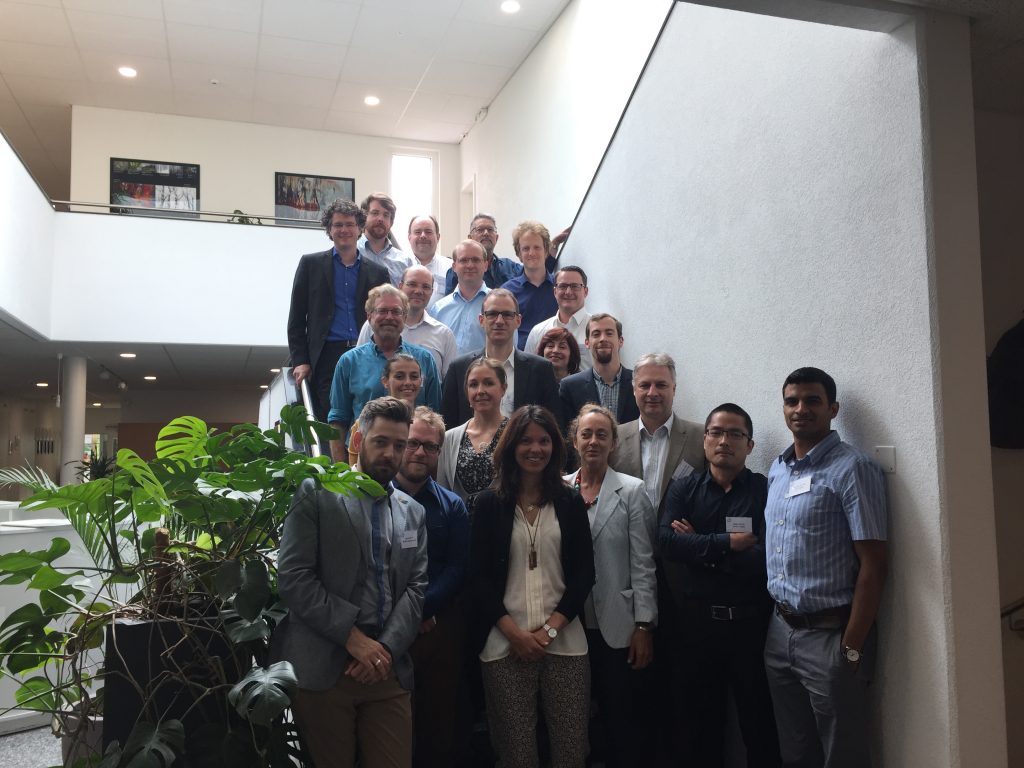Martin Marietta
Dallas’ Office Of Environmental Quality: “You Can’t Handle the Truth” about Pollution

MONDAY, AUGUST 27th
9 AM
ROOM 6ES
DALLAS CITY HALL
CITY COUNCIL QUALITY OF LIFE COMMITTEE HEARING ON DALLAS JOINING A NEW REGIONAL AIR NETWORK
______________________________________________
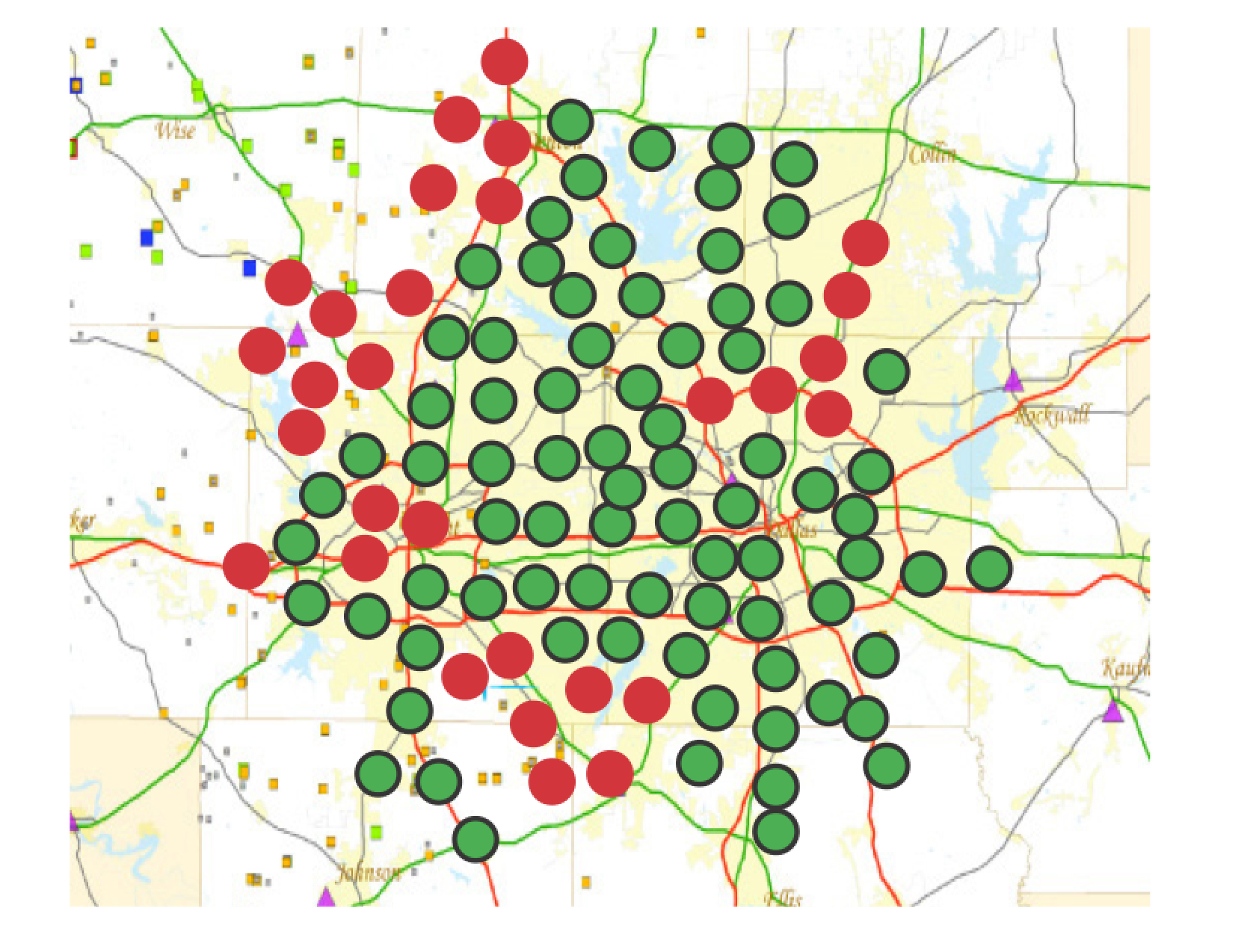 Over the last two years, as members of the DFW Air Research Consortium have promoted the idea of a dense grid of low-cost, high-tech air sensors spread across North Texas, their audiences have usually had one universal response: “This is great. It’s a no-brainer. When can we start? “
Over the last two years, as members of the DFW Air Research Consortium have promoted the idea of a dense grid of low-cost, high-tech air sensors spread across North Texas, their audiences have usually had one universal response: “This is great. It’s a no-brainer. When can we start? “
The single exception to this excitement is the City of Dallas Office of Environmental Quality.
Strange isn’t it? That hotbed of radical environmentalism known as Plano is embracing the idea of network air monitoring with both arms. Richardson and Fort Worth are interested as well.
But within Dallas City Hall there’s not only skepticism, but out right hostility to the the “smart city” idea of providing real time air quality information to citizens from hundreds of monitors.
Why?
On more than one occasion OEQ staff has said that they don’t want to have to take calls from Dallas residents who notice high air pollution levels in their neighborhoods and…expressed the opinion that “certain groups won’t responsibly use the information produced…like in Joppa.”
In other words, the public can’t handle the truth.
(Remind us again what happened in Joppa?

Oh yeah, Dallas OEQ staff was in favor of putting two additional dusty dirty batch plants in the small Freedman’s community that already has a large and polluting roofing shingles plant, a batch plant, and a huge rail switch yard surrounding it.
They made their recommendation for two more batch plants without doing any kind of air monitoring at all in Joppa, despite months of residents testifying at various hearings and meetings about the pollution problem and despite OEQ having the equipment to do it.
Staff made their recommendation without comparing the pollution in Joppa to other Dallas neighborhoods, or without examining any kinds of equity issues at all. Is Joppa the victim of Environmental Racism or not? The OEQ was silent.
Staff based their support solely on the lack of complaints – a record rendered invalid by plenty of Joppa community meetings where air pollution was complained about – and the moderate levels of pollution recorded by the single EPA-TCEQ PM monitor in all of Dallas County, located some nine miles away from Joppa near Mockingbird.
When Downwinders showed up a week before the Council vote and actually took air samples in Joppa for the first time, they showed levels of Particulate Matter that were much higher than that EPA monitor, demonstrating how ridiculous it was for OEQ to base its assurance to Joppa residents on it. It made them look like they hadn’t been doing their job. And they hadn’t. And they hadn’t done it in West Dallas with the concrete storage silo and batch plant fights there. Lately, OEQ hasn’t met a polluter it didn’t like.)
So instead of endorsing the idea that the public has as much of a Right-to-Know what’s in their air as in their food, OEQ would just rather you just not know. Ignorance is bliss.
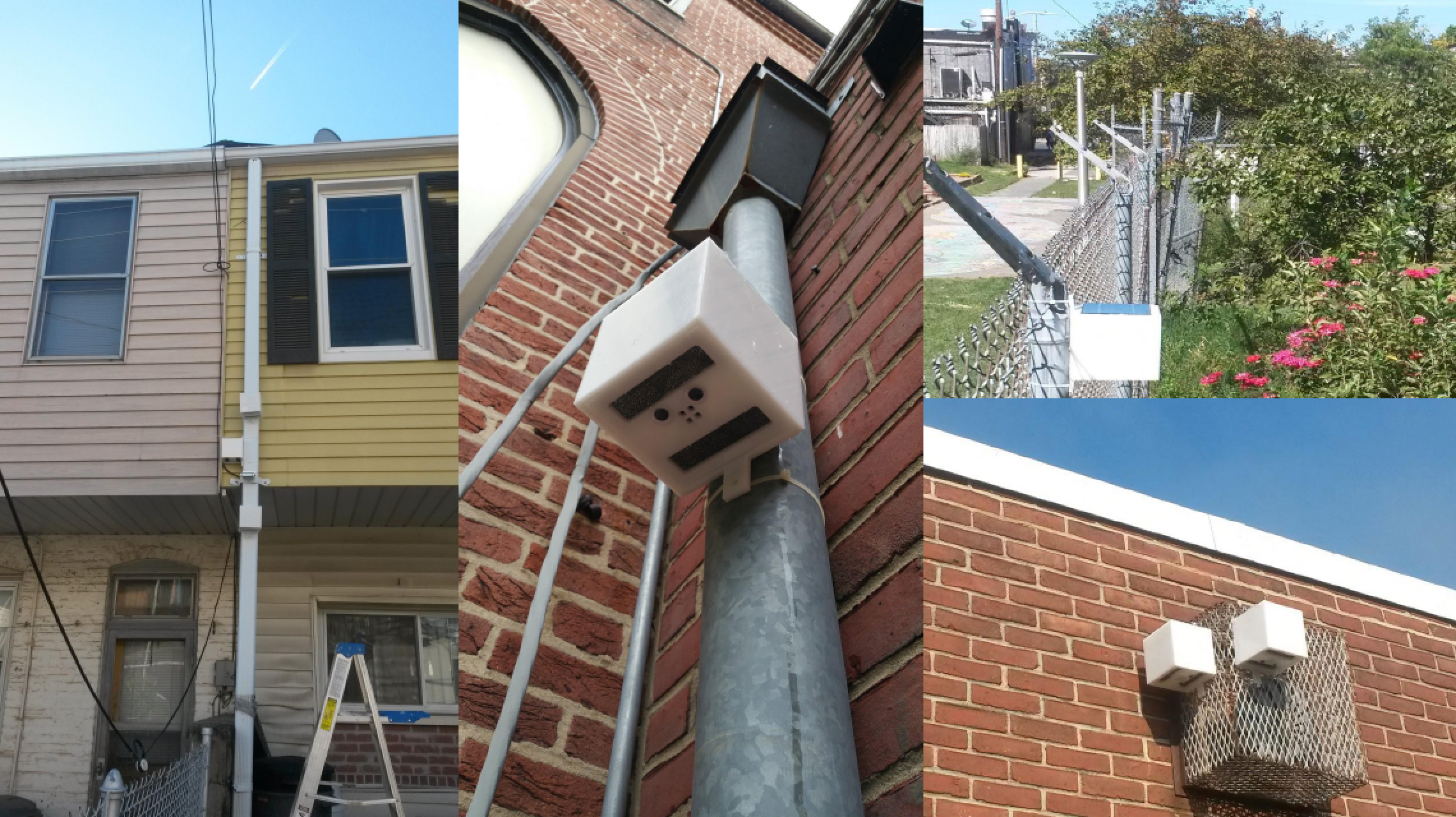 OEQ staffers also have said they object to a network of new air monitors because EPA doesn’t yet recognize their data as “official” and so it can’t be used for enforcement…yet. But do these air monitors have to have that official recognition to begin doing lots of good things for public health?
OEQ staffers also have said they object to a network of new air monitors because EPA doesn’t yet recognize their data as “official” and so it can’t be used for enforcement…yet. But do these air monitors have to have that official recognition to begin doing lots of good things for public health?
Joppa residents didn’t need EPA certification to compare the levels Downwinders recorded with the “official monitor” and know something was wrong. Doctors say they don’t need it to begin looking at correlations between area pollution levels and heart attacks, strokes ER visits, and school absenteeism. Cyclists and runners say they don’t need EPA certification to plot the least-polluted routes for exercising according to the grid. Cities like Plano says it doesn’t need it to better time traffic lights and reduce pollution that way.
It’s quite possible just knowing there are new monitors out there relaying real time information will now make a plant manager think twice about doing something questionable on a weekend or holiday. That’s enforcement – without EPA certification.
Given that Dallas currently doesn’t quantify or measure Environmental Justice issues in the city limits, a monitor network could provide planners and City Council members with a tool to do just that. It could graphically demonstrate how some Dallas neighborhoods are burdened with a lot more air polluters than others, and draw a map of those inequities to prevent them being made worse….to prevent mistakes like the OEQ staff was making in Joppa. You don’t need EPA certification for that impact either.

The hollowness of these staff arguments is proven by OEQ’s own actions. Even while it dismisses the unruly democracy of a real time broad-based PUBLIC monitor network, it’s committing over a million dollars of in-kind staff time and City resources to assisting a PRIVATE air monitoring study that is supposed to show how health can be improved….without EPA certification of the monitors being used.
So the same argument that city staff is using to dismiss the public network is the same one it’s using to support the private study.
You might recognize this M.O. at City Hall:
Staff decides it absolutely must do something about something. It decides how to accomplish that something after an exhaustive and rigorous search of talent and resources within a 100 foot radius of the office where that something is decided. An all out effort is then made to bias, slant, tilt, and otherwise favor the approach staff has decided must be taken against all other alternative approaches that might make sense outside of the 100-foot office radius. Nothing but the original staff approach is worthy of consideration, all others being the work of Satan or Dirty Hippies.
And the City Council? The Deciders for the public-at-large? They have an option to get involved at the very end of this sausage-making. Staff’s view seems to be that bliss is ignorance here too.
This happened with the Trinity River. Now it’s happening with air quality.
In 2014 Dallas got some Rockefeller Foundation money for “Resilience“ preparation. For those without a program, resilience is the fancy Rockefeller Foundation word for Climate Change, or rather the symptoms of climate change. Elected officials and bureaucrats are supposed to feel safer about using it.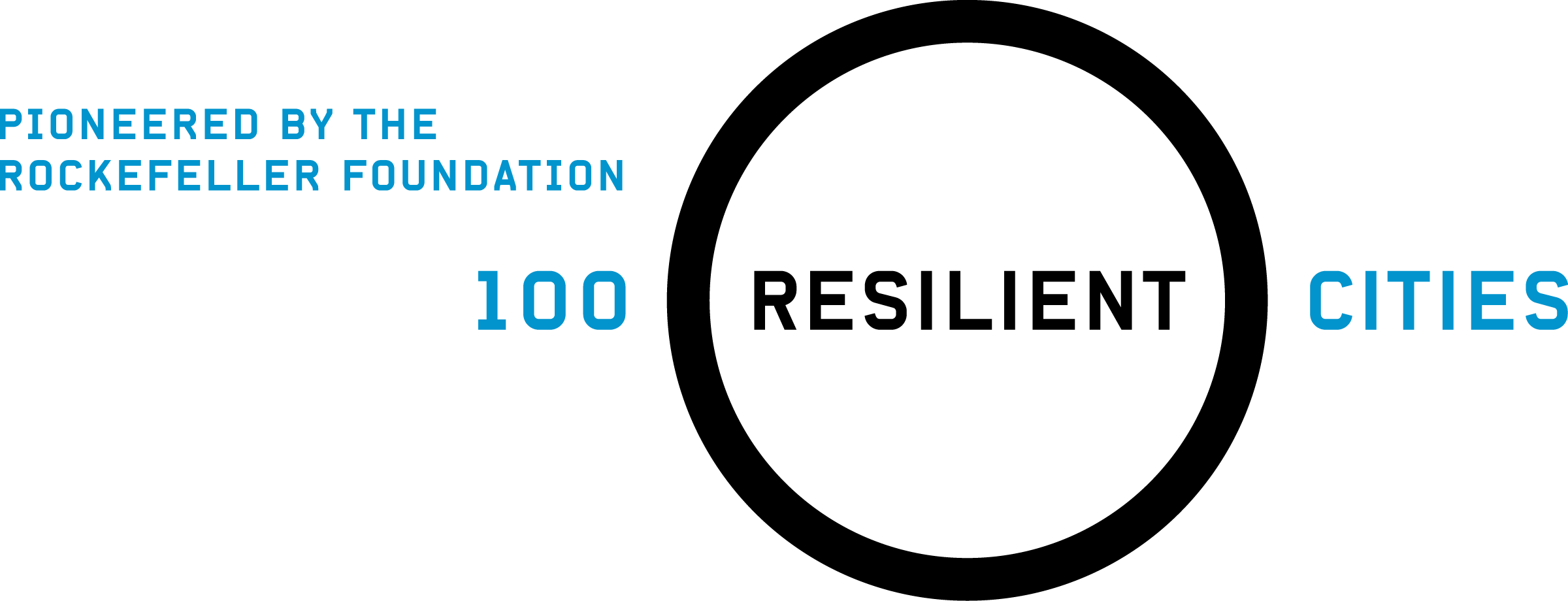
Dallas got so much money that the City created an Office of Resiliency. And that office sponsored invitation-only forums on how Dallas could be more resilient. Not open forums mind you. Not public hearings. They wanted the folks they’d located through that rigorous and exhaustive vetting process. None of the Satanists or Dirty Hippies got notice.
One of the right kind of groups that did get invited to those forums was the Texas Nature Conservancy, a mostly wealthy and white group of landowners dedicated to the noble idea of putting aside large tracts of undeveloped land for permanent preservation. It’s a group well-known for its dedication to open spaces – but not for any research it’s ever done on air quality.
Nevertheless, out of these forums suddenly emerged a partnership between the City of Dallas and The Nature Conservancy to do some kind of new air quality monitoring. There was no competition of concepts and no decision by the City Council. Staff had decided, and that was that.
And so you get the “Breathe Easy” Study.
Nine (as yet unspecified) DISD schools in “South Dallas” will be wired with new air monitors recording Ozone and Particulate Matter pollution in real time over one or two years to study the impact of anti-pollution measures like stricter idling policies on school absenteeism rates.
 But while the information will be gathered in real time from these nine schools, that information will not be shared with the public on the City of Dallas website until after (an as yet unspecified) time has passed. No annoying calls from pesky citizens (or parents) asking why their neighborhood’s air pollution levels are so high today.
But while the information will be gathered in real time from these nine schools, that information will not be shared with the public on the City of Dallas website until after (an as yet unspecified) time has passed. No annoying calls from pesky citizens (or parents) asking why their neighborhood’s air pollution levels are so high today.
Furthermore, after the study is completed it’s unclear what’s going to happen to the monitors in the nine schools.
In this case, the Conservancy and City seem to be tracking the “resiliency” of Dallas students in the face of chronic and acute air pollution problems, and then letting them know after the fact how resilient they were.
And is it irony, cynicism, or both when Dallas City Hall says this new study is needed because “Black kids in Dallas have an asthma rate eight times higher than Asian children and four times higher than whites.”
Maybe that’s because the Dallas OEQ keeps approving batch plants in their neighborhoods.
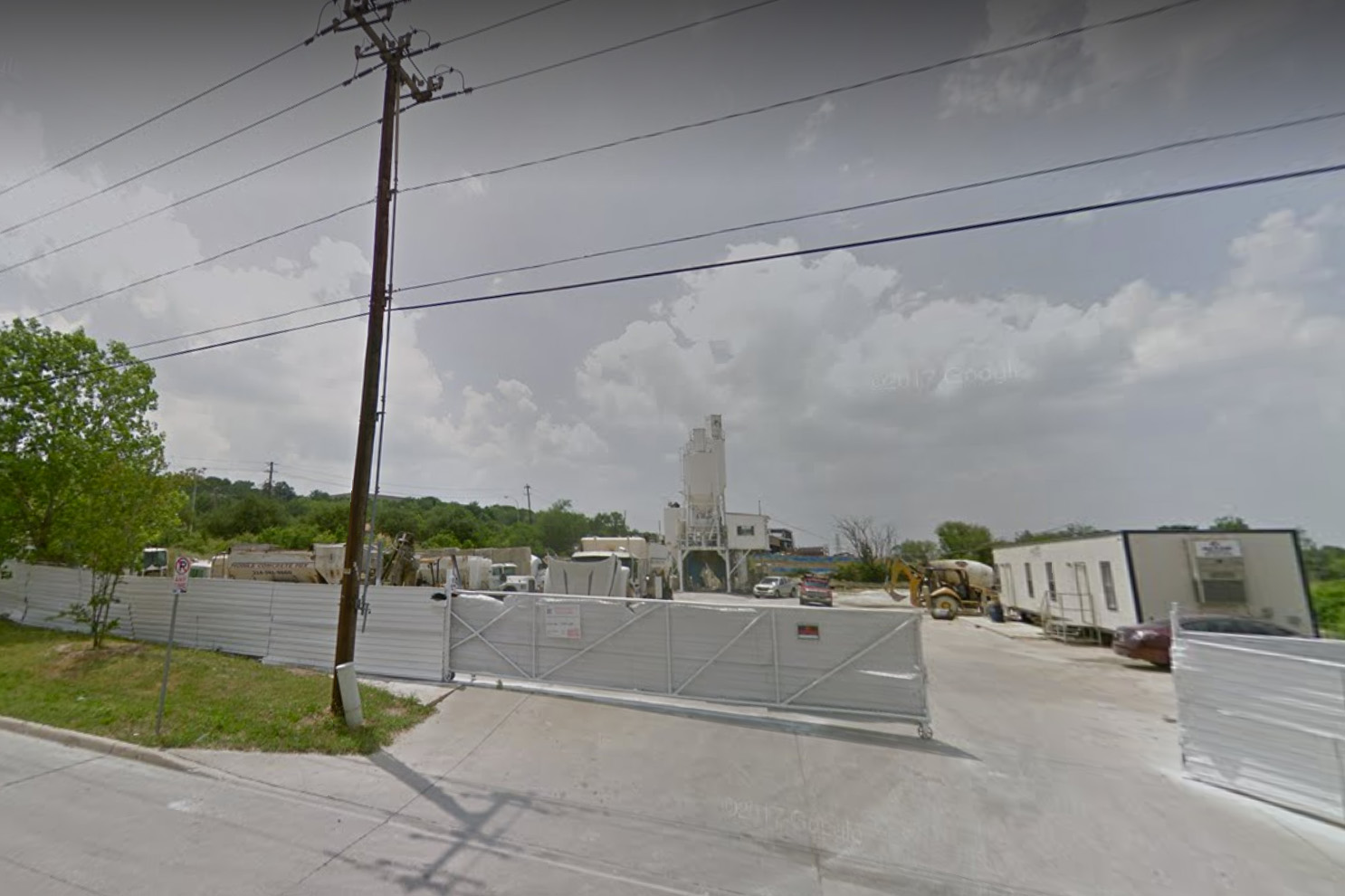 The same department which approved the relocation of the Argos batch plant from gentrified Trinity Groves to working class West Dallas, approved Buzzi’s 165-foot tall concrete silo next door, approved the RamCrete batch plant permit down the street, and whole-heartedly approved two new batch plant permits in Joppa IS NOW concerned about Environmental Justice issues! What amazing powers that Rockefeller money has.
The same department which approved the relocation of the Argos batch plant from gentrified Trinity Groves to working class West Dallas, approved Buzzi’s 165-foot tall concrete silo next door, approved the RamCrete batch plant permit down the street, and whole-heartedly approved two new batch plant permits in Joppa IS NOW concerned about Environmental Justice issues! What amazing powers that Rockefeller money has.
So far, TNC reports they’ve received almost $280,000 in grant money for support of this study. Paperwork found as part of a Texas Open Records Act Request Downwinders submitted to City Hall suggest the City is donating a million dollars in data services capacity alone. That’s in addition to the considerable staff time also lent to the effort. In-kind donations from DISD have not been disclosed.
We know that reducing kids’ exposure to PM pollution will help their health and well-being. We know one way to do that is by turning off vehicle exhaust. It’s not clear what kind of return the TNC or City is getting for its considerable investment.
Meanwhile, the idea of a new network of low-cost, high-tech monitors throughout North Texas giving the public real time information about the state of the air its breathing actually sounds like a great Rockefeller resiliency grant because it helps individuals and localities deal with the symptoms of climate change in their daily lives.
Moreover it’s an indigenous, grassroots effort.
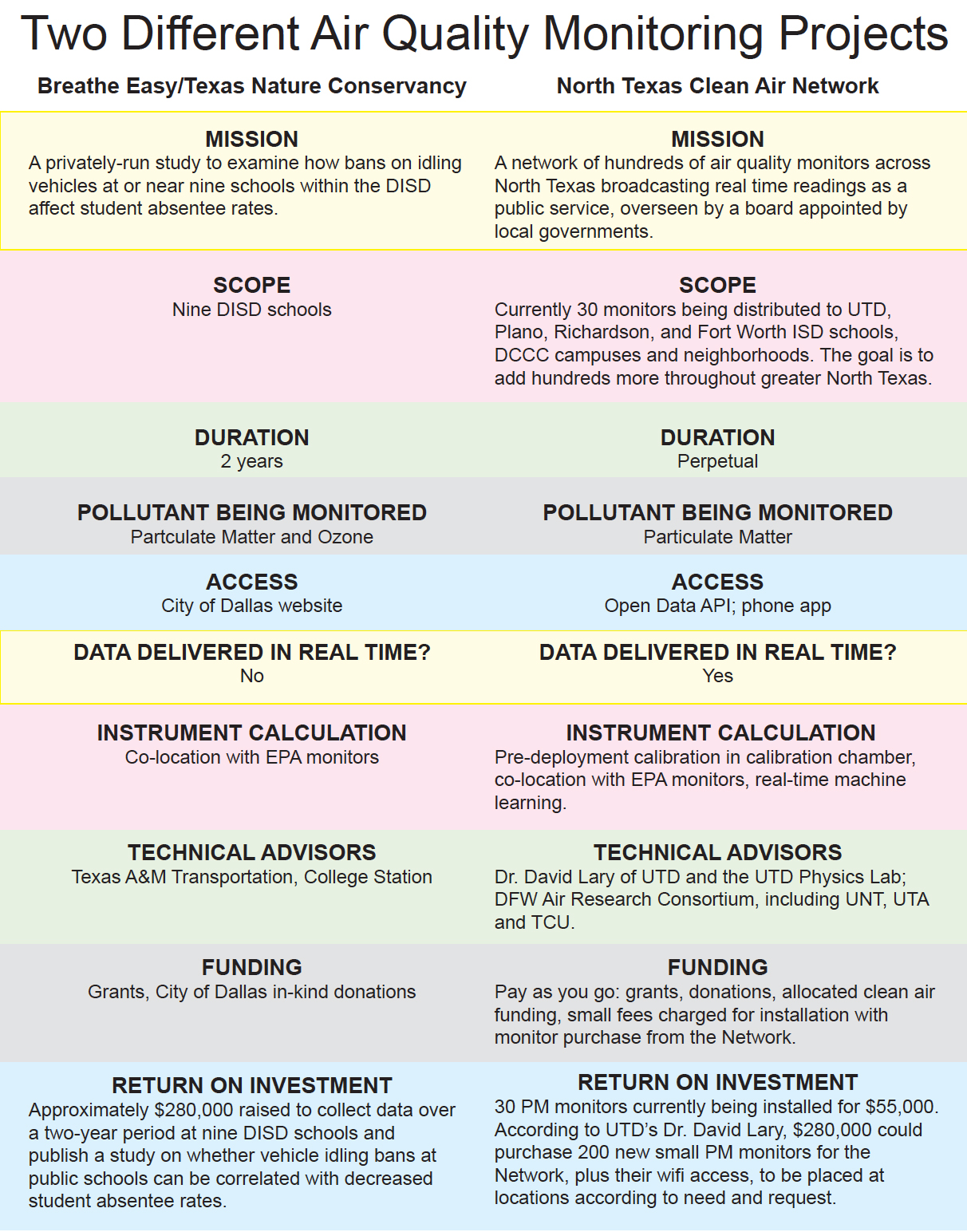
Because the rigorous and exhaustive vetting at City Hall didn’t make it the long 17 miles up to UTD, staff had no idea that one of the nation’s premiere experts in air monitoring teaches there. Oxford-trained Dr. David Lary just got a huge contract from the U.S. armed forces to help them better equip our soldiers for fighting in hostile and toxic urban environments. A big selling point was all the different air toxins in DFW standing in for the real thing. Honest.
It was Dr. Lary’s 2016 National Science Foundation proposal for a pilot project that got the regional network ball rolling. Even though it didn’t get funded, it brought together local governments, scientists, and citizens groups who then forged their own regional slow-cook version. Representatives from UNT, UTA, TCU, and UNT’s Health Science Center participated. So did Plano, and Dallas County.
Dr. Lary has outlined a monitoring network that’s capable of correcting itself in real time using those EPA official monitors as a baseline. EPA has said they’re interested in using his approach. So has NASA. He’s the foremost authority on this topic within hundreds and hundreds of miles but somehow, but Dallas city staff never found him because he wasn’t on that exclusive invite list.
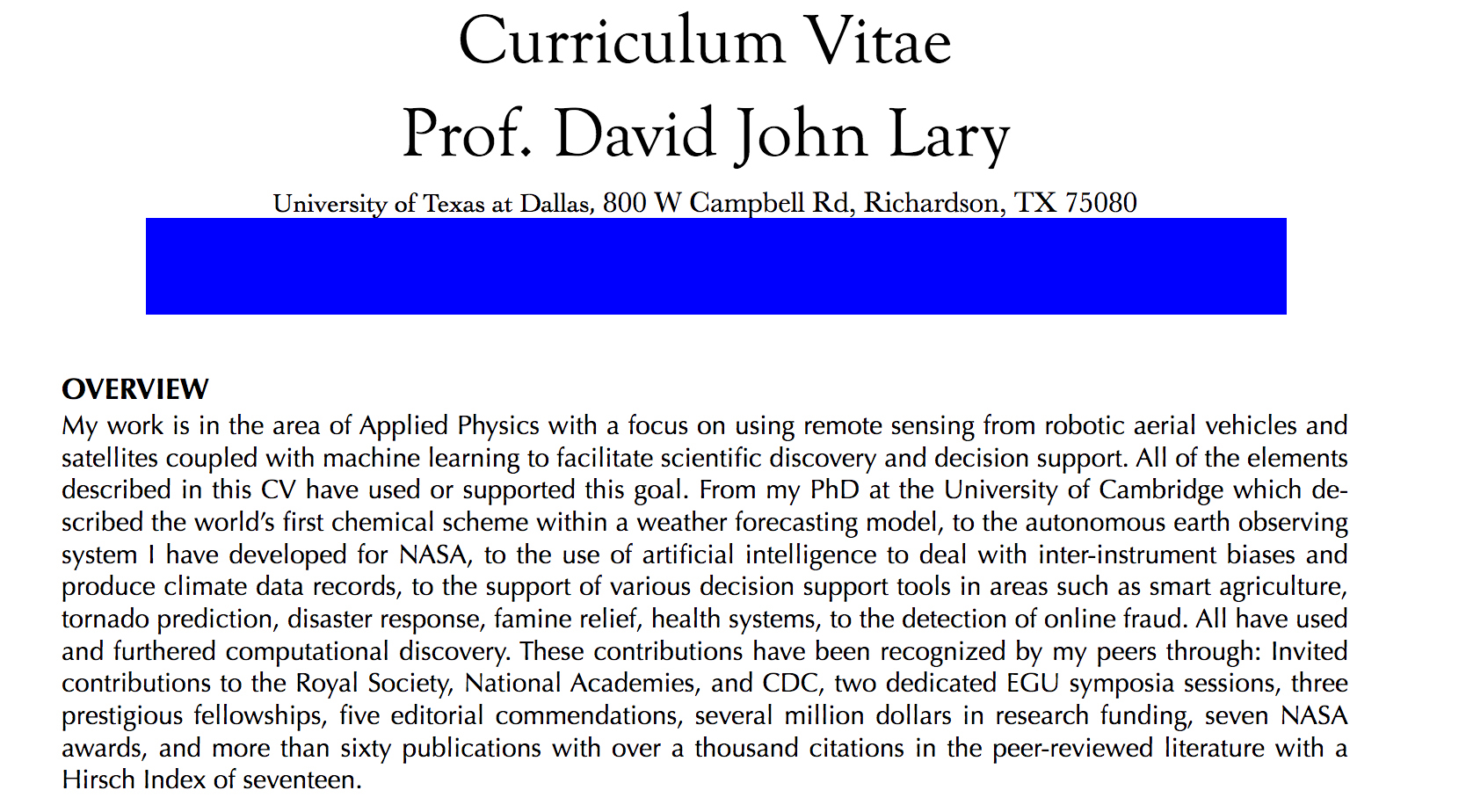 The TNC-Dallas Breathe Easy study is using the Texas A&M Transportation Institute for their air monitoring expertise. Much like the Nature Conservancy, this is a fine outfit, well-known for its work in transportation policy. It is not known for any air quality monitoring work and one can look in vain on its website for a mention of such. No one on their faculty even comes close to matching Dr. Lary’s credentials.
The TNC-Dallas Breathe Easy study is using the Texas A&M Transportation Institute for their air monitoring expertise. Much like the Nature Conservancy, this is a fine outfit, well-known for its work in transportation policy. It is not known for any air quality monitoring work and one can look in vain on its website for a mention of such. No one on their faculty even comes close to matching Dr. Lary’s credentials.
The kicker is that for the same $280,000 as Breathe Easy has raised, Dr. Lary has said he and his lab could build 200 + monitors for regional distribution. Data services will be donated by UTD. You get about 190 more monitors and real time public access for the same money.
So on the one hand you have an expensive study run by a private foundation for a short time using untested expertise, and on the other you have a cost-effective perpetual public network advised by one of the country’s leading authorities on air monitoring. You don’t have to have lived in Dallas very long to know which choice was the “no-brainer” for staff.
The Private Study and the Public Network don’t have to be mutually exclusive, but that’s the way City staff often portrays the choices to the Council – whose first exposure to any of this material will be at the scheduled August 27th Quality of Life Committee public hearing on joining the Regional Network, chaired by Council Member Sandy Greyson.
The Conservancy study could be done parallel to the establishment of the network and its school monitors folded into it at the end of the planned two-year shelf life. The city could help the Conservancy and be a part of the Network at the same time. But Staff seems to have made up their minds they can only support one air monitoring project, or rather, dug in their heels over the overly-democratic goals of this network project – it being supported by the Satanists and Dirty Hippies and all.
There’s no doubt that the same changes in technology which have disrupted other industries are disrupting environmental monitoring too. The ability to buy very reliable monitors for not much money is sending control away from top-down hierarchies to the bottom-up, crowd-sourcing rabble. A few expensive sites are being replaced by hundreds of inexpensive ones. Homeowners are already buying and installing their own consumer versions and linking to national and international networks. They’re making the status quo obsolete, one monitor at a time.
The regional network proposed by Dr. Lary and the DFW Air Research Consortium is designed to try to harness this disruption for public health’s sake. It’s open source, accepting all comers that meet its technical guidelines for participation, utilizes machine learning, and dispenses monitors where the science and need lead, no matter how many. It’s the same thing being done in Los Angeles, Baltimore, Chicago, and Chattanooga. And even Plano, which has already ordered its first monitors from UTD.
Plano has decided it wants a seat at the table as the sensor networks of the future are built. It’s participating out of self-interest because it knows otherwise, the city might not have a say in how the technology is used there. It’s the polar opposite from the sentiments Dallas OEQ staffers have expressed.
On the 27th, Council Member Greyson will be using her Committee hearing to contrast and compare the two air monitoring projects.
City staff will do one presentation on the Breathe Easy study and UTD’s Dr. Lary and Downwinders Director Jim Schermbeck will do another on the regional monitor network. 
Then it will up to the Committee to decide if Dallas can be as progressive on air quality as Plano.
We’re told there will be no public comment allowed. Still, we encourage you to come down to City Hall, put on a button, buy some popcorn, and root for Democracy. The Dirty Hippies are on a roll of late.
On Eve of Council Vote, First-Ever Monitoring Finds PM Levels Already Too High in Joppa
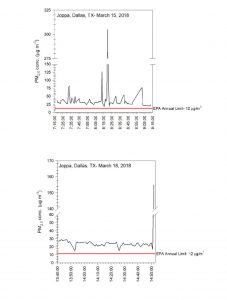 Downwinders PM Committee did the unthinkable this last week and monitored ambient air quality in the tiny Joppa community, where two proposed new concrete batch plants coming up for a Dallas City Council vote on Wednesday want to set-up shop.
Downwinders PM Committee did the unthinkable this last week and monitored ambient air quality in the tiny Joppa community, where two proposed new concrete batch plants coming up for a Dallas City Council vote on Wednesday want to set-up shop.
This was unthinkable because despite months of controversy over the siting of yet more concrete batch plants in a predominantly-minority neighborhood already jammed with heavy industry nobody had thought of doing it before our team of SWAT Citizen Scientists showed-up.
Not the batch plant operators seeking approval of their permit requests.
Not the staff of the City of Dallas, who are recommending approval of those requests.
No…it was our all-volunteer “Soot Sisters” armed with their newly acquired fully-calibrated portable PM monitors who had the audacity to actually see what levels of pollution Joppa residents were breathing now – before the addition of any new sources of bad air.
After we got our results, we kind of understand why air monitoring was unthinkable to those other folks: because the air in Joppa is often unbreathable.
Since our monitors arrived late to the scene in Joppa, we’ve only been able to get snapshots of air quality before the scheduled council vote in the 28th. Two hours on this day, another two on that day. The sample is very small, but it’s also very disturbing.
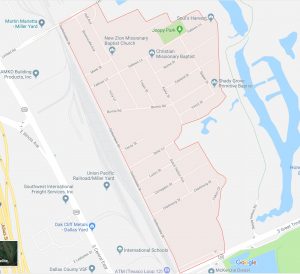
Joppa is already surrounded on three sides by heavy industry
First, they found significantly higher levels of ambient PM pollution in Joppa than was recorded by the only official EPA PM monitor in Dallas, located near Stemmons Freeway during the same time period, and higher than the levels the Committee found at various DART bus stops and routes they’ve also been monitoring as part of the new Green Streets bus electrification campaign
Levels in Joppa were as much as 30 to 50 % higher than the EPA monitor – even on a Sunday. Residents there are already breathing more PM pollution than residents in other parts of the city.
Secondly, if the Committee’s results were extrapolated over the course of a full year, these daily levels would add up to a violation of the EPA’s annual PM pollution standard. That is, if our findings are indicative of daily exposure, Joppa could already be exceeding the EPA standard and any additional PM pollution would only make matters worse.
You can read the entire short report on Joppa, Round one, prepared by Dr. Tate Barrett, our PM Science Director here: Joppa Report #1

Shannon Gribble and Cresanda Allen on a monitoring run in Joppa
Because there’s been no monitoring in Joppa until now, it’s possible the area has been in routine “non-attainment”of the EPA PM standard. It takes three years of annual averages above the standard, recorded at an officially designated EPA monitor, to classify an area as non-attainment and qualify for new federal new controls. However, Dallas’ only official EPA PM monitor is nine miles north of Joppa near Stemmons Freeway and Mockingbird.
Study after study has shown how People of Color generally, and African-Americans specifically, are disproportionately exposed to, and harmed by, PM pollution. While Dallas’ one and only EPA-designated PM monitor could be accurately recording PM levels north of the Trinity River, it’s not reflecting the reality of residents in Joppa, West Dallas, Cadillac Heights, or Cedar Crest.
There’s been a lot of discussion recently concerning inequity of resources in Dallas. It’s not news that this inequity extends even to the very air residents breathe and how the current regulatory system ignores those differences. But our Joppa monitoring casts a new spotlight on that fact. No equal protection is possible unless you have equal access to official monitors which determine enforcement of the laws.
That’s why when we turned our first results over to District 7 Council Member Kevin Felder on Friday, we recommended the City either consider moving Dallas’s sole EPA-designated PM monitor to Joppa, or pay for a second EPA-designated PM monitor to be located in Joppa, to begin recording data as soon as possible to determine if the area is indeed violating the EPA PM standard year-round.
These Joppa results also become another compelling example of why DFW needs its own local air quality monitoring network. It’s ridiculous that there’s only one PM monitor for all of Dallas County’s 2. 5 million residents stretched out over 900 square miles. PM levels as low as 5 ppb
Downwinders has joined with local universities and governments in pursuing the establishment of a local air quality monitoring network that could place inexpensive year-round PM monitors throughout Dallas and North Texas with real time information accessible to the public by a simple phone app. Dallas County Commissioner Theresa Daniels is expected to sponsor a resolution for the creation of such a network at the Commissioners Court in the coming weeks.
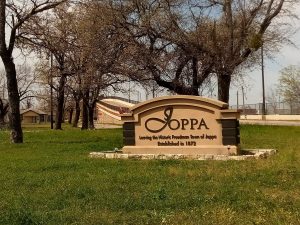 Dallas should follow. The City’s Office of Environmental Quality approves or disapproves of zoning changes like the ones being sought by the batch plants in Joppa without knowing what environmental burdens residents are already carrying. Even though they have the ability and capacity to do real time monitoring of neighborhoods where new industry wants to expand or locate, the OEQ never does. Nor does it have a single toxicologist or public health expert on its staff who’d want to see that kind of information before passing judgement on a zoning request. Instead it’s headed up by a lawyer and is mostly concerned about not making any definitive statements about local environmental health problems or environmental justice issues at all. With all the house-cleaning at Dallas City Hall since a new city manager took control, the OEQ now looks to be one of the last repositories for Business As Usual thinking. That must change.
Dallas should follow. The City’s Office of Environmental Quality approves or disapproves of zoning changes like the ones being sought by the batch plants in Joppa without knowing what environmental burdens residents are already carrying. Even though they have the ability and capacity to do real time monitoring of neighborhoods where new industry wants to expand or locate, the OEQ never does. Nor does it have a single toxicologist or public health expert on its staff who’d want to see that kind of information before passing judgement on a zoning request. Instead it’s headed up by a lawyer and is mostly concerned about not making any definitive statements about local environmental health problems or environmental justice issues at all. With all the house-cleaning at Dallas City Hall since a new city manager took control, the OEQ now looks to be one of the last repositories for Business As Usual thinking. That must change.
Downwinders PM Committee was back out in Joppa this last weekend for more rounds of air monitoring. Those results will be dowloaded and analyzed by Dr. Barrett and presented to the City Council on Wednesday by PM Committee member Misti O’Quinn. Stay tuned.
Mysterious Catastrophic Air Pollution Episode is Why DFW Needs its Own Air Sensor Network
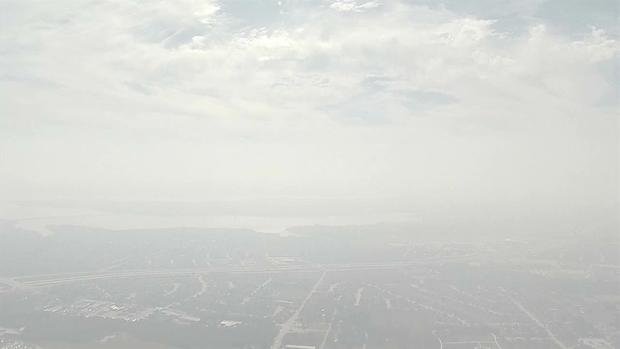
Not quite two weeks ago, on Thursday October 19th, something happened to throw local air quality conditions into the red zone for most of the day.
There was a inexplicable smokey haze extending along the limestone escarpment from Midlothian to Dallas and then north to Denton, sending Particulate Matter pollution soaring to Beijing levels and ozone readings so high the whole regional average went up a part per billion. Countless downwind residents complained to officials, FaceBooked, and Tweeted about “the smell of burning plastic” enveloping their neighborhoods with the smoke, which was so thick many thought the problem was just down the street.
 The 24-hour standard for Particulate Matter Pollution is 150 ug/m3. The annual standard is 12.
The 24-hour standard for Particulate Matter Pollution is 150 ug/m3. The annual standard is 12.

70 ppb is the new ozone standard.
The events took the Texas Commission on Environmental Quality completely by surprise. Commission computer forecasting had not predicted an Ozone Alert Day or warned of heavy PM pollution. Officials were playing catch-up for the rest of the day.
Now almost two weeks later nobody official knows what caused this Really Bad Air Day. Not the EPA. Not the Texas Commission on Environmental Quality. Not the DFW area citizens who breathed in the dirtiest air their lungs have seen all year.
Despite the sophisticated technology available to us in 2017, a single unexpected incident upwind of DFW can throw the entire North Texas air shed into the danger zone with no warning and no clue as to what initiated it.
Readings from state monitors were of no help until damage had already been done. As usual they were two hours or more behind in reporting. The numbers they were displaying at 12 noon were actually taken at 10 am. You had no idea what was going on in real time so that you might better protect yourself or family.
There are only three or four Particulate Matter pollution monitors in all of DFW. Even if you’d wanted to use the state’s current monitoring system to track this mystery plume, you couldn’t have done so. It doesn’t have that capability.
As inquiring reporters called, the TCEQ staff found a variety of things to blame. TCEQ suggested the smoke was from a Bastrop forest fire near Austin. But readings from monitors between Bastrop/Austin and Dallas show there was no problem south of Midlothian that day, while there was a huge problem north of there at the same time. Eyewitnesses who saw the plume on Thursday reported a thick narrow ribbon of a plume you’d see coming off a near-by source, not the sort of diffused cloud you’d expect to witness after traveling more than a hundred miles downwind. And then there’s that “burned-plastic smell.”
Then it was maybe one or more “controlled burns” in the Midlothian-Mansfield area. As it turns out, neither fire department found evidence of any permitted controlled burns in their own jurisdictions that could have cause so much pollution. Midlothian’s single permitted fire for the day was “the size of a coffee table” according to a department employee.
According to the Mansfield Fire Department “a fire” was reported to be located at Kimball Road and Hwy 287 just north of the Midlothian city limits. This is what’s at that intersection:

Please note the caution against open flames. Could a fracking site have produced the kind of particulate matter pollution and haze we saw on October 19th without methane or other kinds of pollution being released en masse as well? It doesn’t seem like it could. But what if the fracking site had been turned into a temporary waste incineration site for the day?
That’s not all. A satellite pic of the intersection and what’s around it reveals Kimball and Hwy 287 to be a kind of rogue’s gallery of potential suspects:
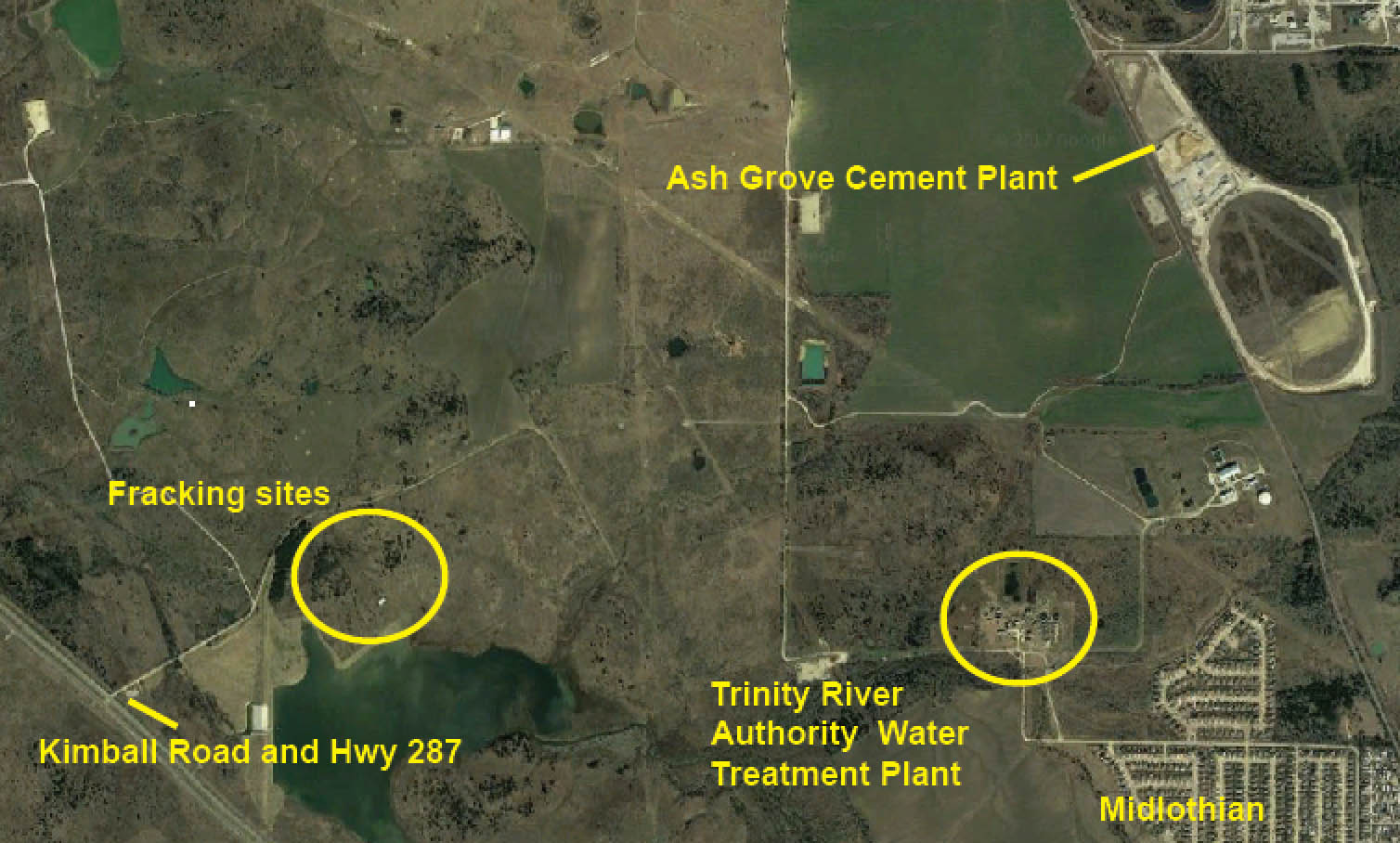
Besides the fracking sites you can be see in mid-drilling on this Google street level tour, the road leads to a Trinity River Authority Wastewater Treatment plant and the back door of the giant Ash Grove cement plant.
TRA is a shadowy, 60-year old regional bureaucracy that owns millions of acres of land, reservoirs, landfills, and wastewater-treatment facilities. It’s been in environmental hot water before. Wastewater treatment accumulates a lot of solids, and the TRA handles a lot of trash. It’s not inconceivable that it had something to do with the October 19th incident by thinking it could get away with an open burn on its own property.
Ditto for Ash Grove. Like the other two cement plants in Midlothian, Ash Grove’s kiln is allowed to burn industrial waste, including used oil, tires and plastics – remember the oft-cited “smell of burning plastic” citizens reported on the 19th? Waste-burning cement plants have had their wastes combust and cause huge fires before and each plant has its own emergency response crew which might be able to put out a fire without calling Midlothian.
There’s no proof Ash Grove, TRA or the fracking sites were the cause of the October 19th public health disaster. But there’s also no proof yet they didn’t cause the problem.
The truth is: there’s no official explanation for what made the air so dangerous to breathe on October 19th .
More truth: As of Friday, October 27th the TECQ had not even opened an official investigation into this matter – which again, sent Particulate Matter pollution to levels not seen outside SE Asia and single-handedly raised the regional ozone level.
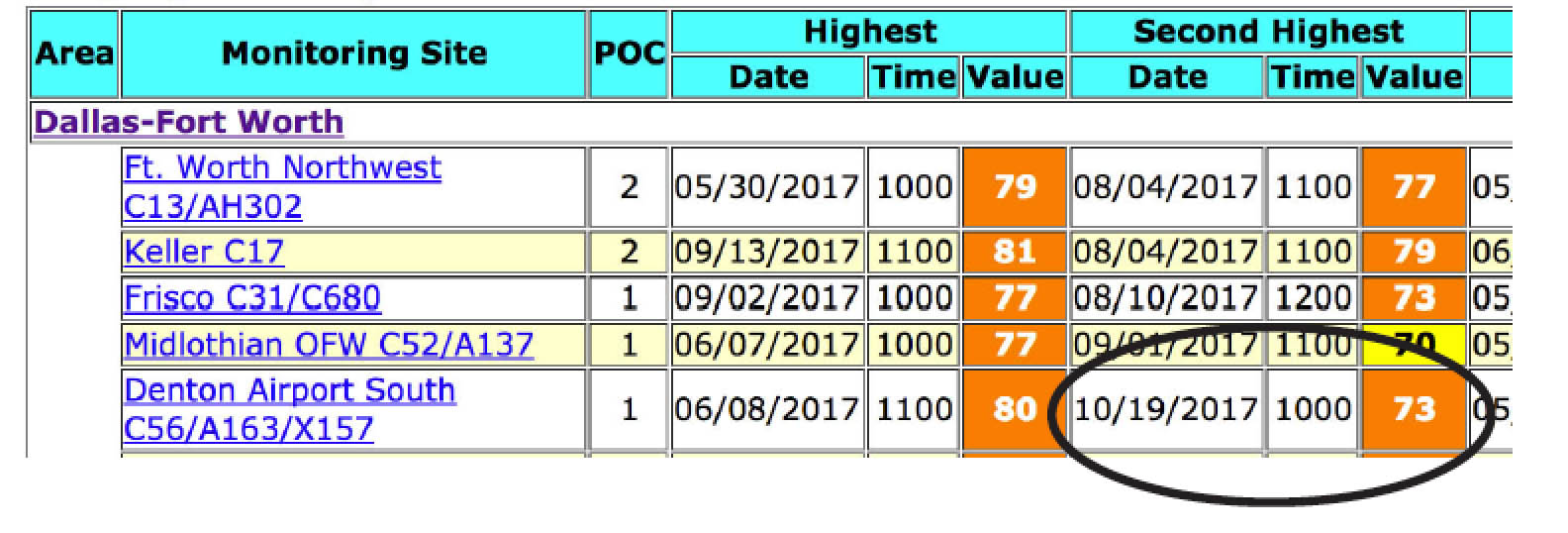
This is why Downwinders at Risk filed the first of what we’re sure will be a series of Texas Open Record Act requests last Friday seeking:
“Any and all printed or electronic documents and electronic media containing information concerning or related to ozone, particulate matter and/or haze air pollution readings and levels in the Dallas-Forth Worth non-attainment area on Thursday, October 19th 2017, including official ozone action warnings issued, complaints filed about air quality in the Dallas-Fort Worth area that day, photographs, satellite images, computer modeling, as well as all material related to any questions, inquiries, or investigations about air quality in DFW on October 19th anyone in the TCEQ, or contracted by TCEQ has been tasked to perform since October 19th or is still performing currently, and e-mails, letters, reports, telephone logs and notes, memos and all other material about October 19th air quality from 6 am Tuesday October 19th to Wednesday October 25th, 2017.”
TCEQ has until November 10th to respond. We’ll keep you posted.
In the meantime, this episode becomes Exhibit A in why DFW needs to catch-up with other metro areas and build its own network of high tech air quality sensors.
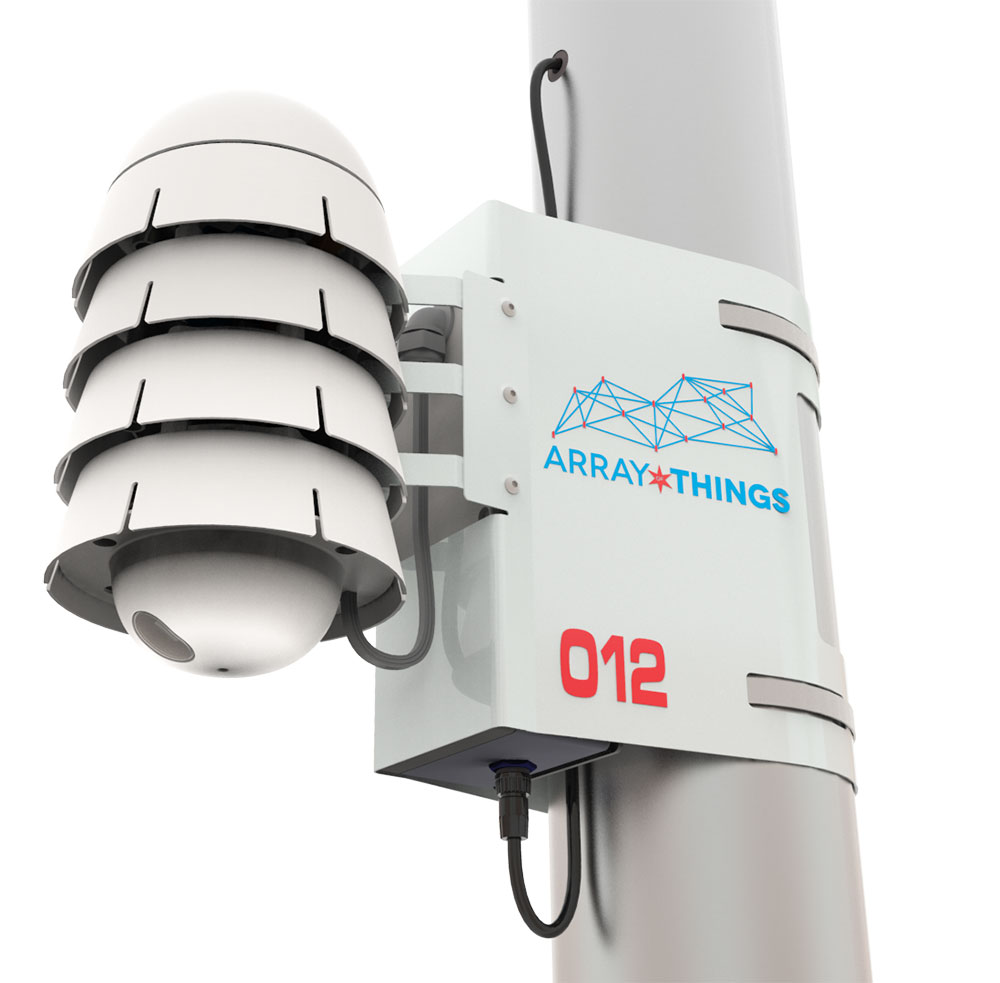
If such a grid had been in place, there would have been a real time warning of the PM and ozone pollution being generated shortly after the it started. There would have been a way to locate the source of the pollution right away and do something about it before it got worse, and there would have been a way to predict the plume’s course and warn those in its path before it got there – not two hours after it arrived.
In this sense a modern sensor grid is actually a pollution prevention device, an investigative tool, and an early warning system all rolled into one.
In a metropolitan area that’s been out of compliance with the Clean air Act for 27 years and counting over 14 million lungs are being held hostage by a state air quality monitoring system left over from the 1990’s. It’s being maintained by a state agency that’s run by polluters, officially thinks smog isn’t bad for you, and is cutting its air monitoring budget.
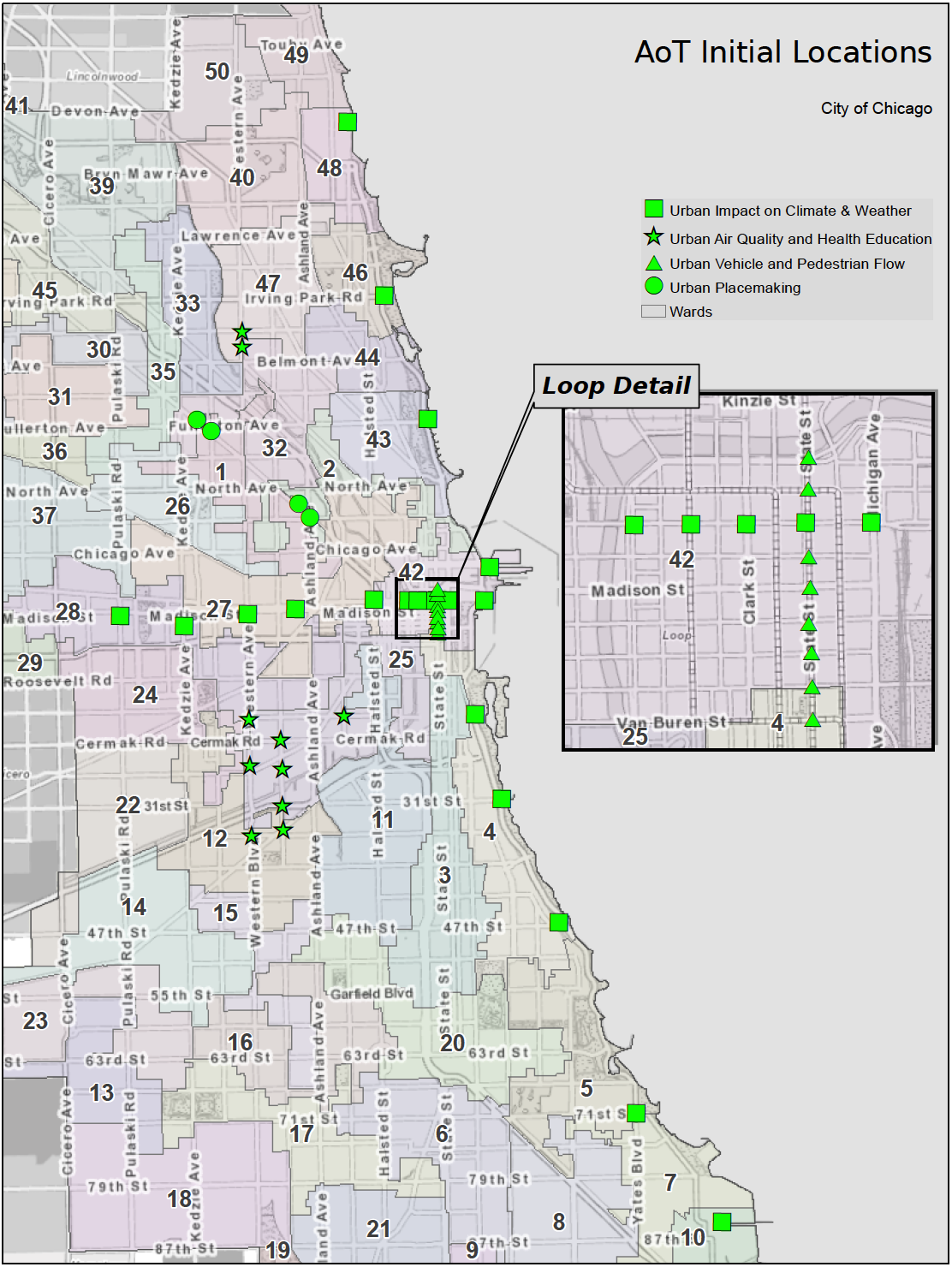 There’s no desire in Austin to update this obsolete system and no money to do so. If DFW officials want to utilize 21st Century technology to help them clean their air, they’re going to have to build their own network of air monitors – exactly the proposal the DFW Air Research Consortium was trying to get funded with a National Science Foundation grant. Close, but no cigar.
There’s no desire in Austin to update this obsolete system and no money to do so. If DFW officials want to utilize 21st Century technology to help them clean their air, they’re going to have to build their own network of air monitors – exactly the proposal the DFW Air Research Consortium was trying to get funded with a National Science Foundation grant. Close, but no cigar.
Without the NSF grant, local officials are going to need to get creative. Are there private businesses who might want to sponsor an app that could tell give you useful air quality info in exchange for naming rights: “Brought to you by the Nissan Leaf DFW Clean Air Network.” Are there local foundations that would contribute? What about local high-tech billionaire Mark Cuban? For less than a million bucks, DFW could have 500 Particulate Matter sensors that would be capable of of pinpointing a problem down to the street address.
Baltimore, Chicago, Chattanooga, Louisville, L.A. , Oakland, and Lafayette, Louisiana are all way ahead of DFW in building out their own local dense grid of air sensors. They’ve done it with a combination of private, government and academic know-how and financing.
We have as much, or more technical expertise and money than any of those locales and we should have more incentive given our chronic air pollution problem. There’s no reason we can’t build our own modern, more protective, more useful way of monitoring air pollution – even if the state isn’t interested. Not only can we do it, but in light of the events of October 19th, it should be considered a necessary act of public health self-defense.
Downwind in Switzerland: “Do you carry responsibly-sourced concrete?”
(Half of these people represent industry. Half are environmentalists. Can't tell which ones? That's a good thing.)
Should a bag of concrete be like an organic banana or a new chair made out of recycled wood and get "certified" as being responsibly-sourced, or "sustainable?" And if so, what's the criteria for making such a judgment, and who's making it?
Those are the complicated questions at the heart of a new worldwide initiative by the concrete/cement industry to come up with a way to sell its products in a more environmentally-friendly way.
After a couple of years of working on a scoring scheme, the mostly European-based intra-company group (LaFarge/Holcim, Heidelburg, CEMEX) charged with designing the system was ready to unveil it to the international environmental community for the first time in mid-July at a small meeting in Gland, Switzerland, headquarters of the International Union for the Conservation of Nature, whose staff facilitated the review process. IUCN had performed the same function for the aluminum industry when it went through a similar "green" self-examination.
Nine different environmental groups from at least seven different countries (Britain, Bulgaria, China, India, Lebanon, Switzerland) spent three days assessing and critiquing the industry's proposal – including the lone representative from the U.S., Downwinders at Risk's Jim Schermbeck. Participants not only met during the day, but ate together, and stayed in the same lone hotel in the small, outlying suburb of Geneva. Inside the meeting room, discussions were often frank, funny, and awkward. Outside, conversations ran the gamut, from architecture, to vacation trips, to Texas BBQ.
It's not a surprise that the concrete/cement business wants its relatively messy business to be seen through green-tinted glasses. Old timers will recall the burning of hazardous waste in Midlothian cement plants was relabeled "recycling" in the 1980's and 90's.
But this time around, the pressure is not necessarily to greenwash the transformation of a cement kiln into a waste incinerator, but to give an environmental patina to the final product, concrete, so that it can compete in the marketplace with building materials that already have their own green certification schemes up and running.
In other words, there appears to be new market pressure on the industry to "go green." Wood and Aluminum all now have their own systems for doing so. Concrete/Cement is lagging behind because it can't point to such a system. They want everyone from a construction site manager to a do-it-yourselfer to ask for "certified concrete" in the same way customers want wood that wasn't cut from a rainforest habitat, and aluminum made with Bauxite that wasn't mined at the expense of indigenous peoples.
Congratulations. Consumer demand for green products is so great that even the conservative cement/concrete industry feels the need to respond.
But that's also not news to North Texans. Certainly one reason Downwinders had a seat at the table in Switzerland was our pioneering Green Cement campaign of 2006-2011 which used government procurement policies to reward less polluting Midlothian cement kilns and punish the dirtier plants. That was the first time the marketplace for cement had been used toward greener ends in the US.
While that local effort looked exclusively at the differences in air pollution impacts from the Midlothian cement kilns, this new initiative starts at the limestone quarry, includes the aggregate industry (sand and gravel) goes through the cement kiln, and then continues all the way to the concrete batch plant and the bag of Sakrete at the store. It looks at impacts to water supply and quality, air quality, energy use, climate change, and local populations at each of these stops along the product cycle.
Much of the energy behind the initiative seems to come from a new generation of European industry representatives who've grown up with a different sensibility that takes green values for granted. More than one environmentalist noted a more open and questioning tone to the back and forth conversations. Whether this new attitude can be sustained and allowed to flow into real policy changes, is of course, the acid test of this first round, which must be finished for a pitch to the CEOs of the major industry players in December. Apparently the bosses are not entirely sold on the idea of needing such a certification at all, and, at times the whole idea had the air of being a kind of end-run around the Establishment by some Young Turks, albeit, corporately-backed.
And there are some very large challenges that could sabotage any good intentions, primarily, the continued reliance on burning wastes for the substantial fuel needs of a cement kiln. As much as kilns have modernized, making cement still involves cooking rock at very high temperatures provided by a very hot, continuous flame. Something has to fuel that flame day after day, year after year. Just buying the fuel for that flame represents as much as 60% of the operating costs of a cement plant.
This is why companies are always looking for ways to cut those energy costs: by turning themselves into incinerators and charging generators to burn their toxic wastes, by getting subsidies from government to burn wastes like tires, by getting refuse from other industries which would otherwise have to pay to have them hauled away. In terms of large PR problems, none loom larger than the inherent one that goes with the introduction of burning wastes in the local kiln. That's how Downwinders got our start.
But because of the volume of fuel needed as well as the required high temperatures, there are only so many kinds of things a kiln can practically burn. Midlothian kilns began by burning natural gas. If you're only looking at the end result of the flame, and not how the gas got here, it's still probably the cleanest source of fuel. Then there's coal, which is a no-go fuel in 2016 for all kinds of reasons. After that you get to wastes. Even if it doesn't have a permit to burn "hazardous" wastes, a kiln still can burn things like carpet pieces, plastics, shingles, and car "fluff." These are all materials that can release toxic air pollution when burned. Finally there's biomass – wood refuse, agricultural waste, or fuel crops themselves like sawgrass. Originally supported universally by environmentalists, these choices now have climate consequences that make them less desirable.
These are not easy choices for industry….or environmentalists. Schermbeck made the offer to industry to sit down and work on an agreed "hierarchy" of wastes that would establish minimum high BTU value and low toxicity levels, as the group had done over a decade ago with TXI in a private mediation process that never panned out, but showed vast differences in fuel characteristics. At last word, the offer was being mulled over by industry along with all the other suggestions made by environmentalists. By October we should know how first round of assessment has changed the scheme – or not. Then another round of feedback from the environmental community, and a final decision by the end of the year.
At stake is the potential to connect environmental progress and profit-making within one of the most environmentally-disruptive industries around. To establish performance floors, raise best practices, set new precedents. There are large risks and opportunities for both sides.
Besides being close to the corporate headquarters of most of the major companies invovled, and home of the IUCN, Switizerland seemed the appropriate place for this first-time gathering for another reason. At the end, everyone arrived at as if on the edge of a metaphorical mountain precipice with a sizable, but not insurmountable gap separating where the industry is now, from where it needed to be. Whether that gap can be bridged any time soon remains to be seen. But the meeting in Gland was a good keystone to put in place for any future span designed for the job.
Another Chapter of “Why Don’t We See This in Midlothian?”
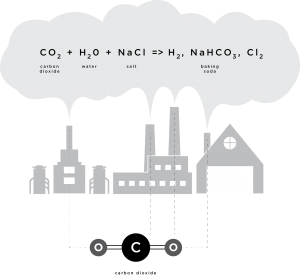 Cement plants are among the world's largest sources of CO2. In order to reduce their carbon footprints, either voluntarily or to comply with new environmental regulations, as well as make a buck, owners are trying out different strategies to turn their Greenhouse Gases into just plain green cash.
Cement plants are among the world's largest sources of CO2. In order to reduce their carbon footprints, either voluntarily or to comply with new environmental regulations, as well as make a buck, owners are trying out different strategies to turn their Greenhouse Gases into just plain green cash.
As far as we can tell, the "SkyMine" pilot-project announced for San Antonio's Capital Aggregates Cement Plant is still on schedule for operation later this year. Employing 50 people, the first-of-its-kind facility will convert the cement plant's carbon dioxide into baking soda and hydrochloric acid that's aimed at oil and gas field use.
Now comes word that a LaFarge Cement Plant in Canada is hooking up with a fuel cell company to make a slightly more progressive product from its GHGs:
"Mantra Energy Alternatives has struck a deal with Lafarge Canada to deploy an electrochemical reduction technology at Lafarge’s No. 9 Road cement plant.
“This will be the first pilot plant of its kind in the world,” said Mantra’s vice-president Patrick Dodd in a press release.
On paper, the technology would convert carbon dioxide, considered the most prolific greenhouse gas, into useful chemicals like formic acid and formate salts. The pilot plant would convert 100 kilograms per day of carbon dioxide emitted from the local cement plant into concentrated formate salts, which sell for about $1,500 per tonne.
Mantra is eying the formic acid for use in its patented fuel cells, which it bills as a significantly less expensive fuel cell with greater power density."
Granted, the manufacturing of oil and gas chemicals sounds more likely for one of the three huge Midlothian cement plants to attempt than diving into the alternative energy business, but at least it's something. The end products can change and adapt but these projects begin to put the infrastructure of a supply and demand system in place while seeing potentially large decreases in CO2 output. In 2014 America, the fastest way to get reductions in GHGs is to make it profitable to do so. These experiments pave the way for that to happen.
There's no question that the TX/ Martin-Marietta, Holcim and Ash Grove cement plants are the largest stationary sources of CO2 in North Texas, or that together, they form a huge GHG hotspot. All the old coal-fired power plants that would have challenged them have been shuddered or converted to gas.
While (forced) modernization at all three plants like the conversion from wet to dry kiln technology has brought all emission totals down, particularly CO2, the fact remains that the huge scale of operations in Midlothian means there's no other facilities that churn it out as much. And yet not one creative idea for how to reduce those huge local emissions has been announced from any of those companies. You can't just use the Texas excuse because the San Antonio experiment is happening despite no immediate government mandate, especially on existing facilities. And you might think that the first company to do so would receive some needed good PR. But nope.
This has been another chapter of "Why Don't We See This in Midlothian?"
End of an Era: TXI Cement Sold To Martin-Marietta
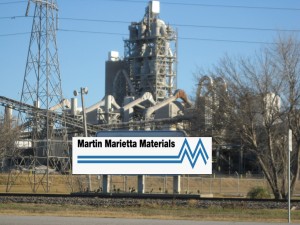 In a $2 billion deal, Raleigh, North Carolina-based aggregate and crushed stone manufacturer Martin Marietta Materials (a separate spin-off on the more well-know aerospace conglomerate) bought Dallas' own TXI Cement, which opened its first cement kiln in Midlothian in 1960.
In a $2 billion deal, Raleigh, North Carolina-based aggregate and crushed stone manufacturer Martin Marietta Materials (a separate spin-off on the more well-know aerospace conglomerate) bought Dallas' own TXI Cement, which opened its first cement kiln in Midlothian in 1960.
This year, that kiln, along with the three other obsolete wet kilns at TXI's Midltohian plant that burned hazardous waste for two decades, is due to be demolished, following the company's corporate demise at the hands of the grandson of its founder. And then, the last remnants of the old TXI will be gone for good.
What does the change in ownership mean for breathers in North Texas?
Martin Marietta has owned and operated cement plants around the US in the past, but they'd divested themselves of these prior to 2014. As of now, the TXI cement plants in Texas and California are apparently the only ones the company owns. There's some speculation that Martin-Marietta bought TXI for its aggregate, stone, and concrete facilities in Texas and California, and will soon seek a buyer for the cement plants it inherited, but doesn't really want.
If that's true, the new owners will act as placeholders of the status quo, not investing in big new capital projects, but also trying not to lose any of the value of the assets they now have by running them into the ground. Martin probably won't look favorably upon attempts to bring smog-reducing modern Selective Catalytic Reduction (SCR) technology to TXI via the next clean air plant for DFW, now due in June of 2015. Not only would the plant be among the first to adopt the technology in the US, (even though SCR has been successfully used in European cement kilns for over a decade now), but it would mean new capital investment and a new learning curve.
Swiss-based Holcim Cement, with a huge plant already in Midlothian and a large manufacturing footprint in the US, was rumored to be one of TXI's suitors before the sale was announced. It could be that Holcim, or another well-established player in the cement industry winds up with the actual kilns in the next year. That could complicate the plant's participation in the new clean air in other ways even if new owners are not as intimidated by the demand for new technology
Politically, it'll be interesting to see which Austin lawyers and lobbyists get the business of the new company. Martin-Marietta owns over 40 facilities in Texas already and is represented by it's own crew. Will TXI's law firm and lobbyists survive the buy-out? There are industry lobbyists that will keep the ball rolling no matter what – the Chemical Council, the Aggregate Association, etc. But in Austin, it's all about relationships, and it's hard to say yet how this Martin's buying of TXI changes any of them.
Maybe the place TXI's absence will be felt the most in in the corridors of power in DFW. TXI was proudly headquartered in Dallas. Ralph Rogers, TXI's founder and patriarch was a driving force in local philanthropy, giving millions to public broadcasting (KERA is housed is housed in the "Ralph Rogers Communications Center") and other non-profits. Besides feeing like he was entitled to use PBS's iconic Big Bird to sell the benefits of burning hazardous waste in 50-year-old cement kilns, the non-profit giving Rogers was responsible for made him a known figure on the Dallas Charitable circuit. In turn, this made it hard for the Powers That Be to criticize Roger's company when it became a waste incinerator.
Locally, the establishment played golf with the Rogers' or attended black tie dinners with them, or helped them lift the oversized scissors at ribbon-cutting ceremonies. But that was old Dallas. Hardly of those relationships survived past Ralph Rogers' death in 1997. His son, Robert, failed to maintain that same high-profile locally, and his grandson Jamie seems totally disinterested in the family business or its legacy of charitable giving.
Now, the move of company headquarters from Dallas to Raleigh will complete the disappearance of the once-mighty TXI on the local scene. They'll still be company representatives at functions, but it won't be the guy who can write the big checks, or who the Mayor had a splendid time with last Saturday at the Club.
The company's local political influence has forever been diminished, and that's a good thing for citizens who are fighting the company to get modern controls like SCR. Now, it's just one more corporate entity with a presence in North Texas. A presence that makes it the single largest air polluter in the region. That's the way Dallas and other downwind cities should have viewed the company all along.

